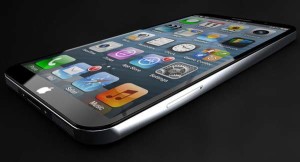Is the iPhone 6 coming already?
 Insiders are reporting that Apple has slashed its orders for new iPhone 5 screens prompting rumours that they are scaling down production in preparation for the launch of the iPhone 6. It seems unlikely but it’s an increasingly-popular explanation for Apple cutting down its component orders.
Insiders are reporting that Apple has slashed its orders for new iPhone 5 screens prompting rumours that they are scaling down production in preparation for the launch of the iPhone 6. It seems unlikely but it’s an increasingly-popular explanation for Apple cutting down its component orders.
Sources said to be familiar with Apple’s component purchases have told the Wall Street Journal that in the first quarter of 2013 wholesale orders for iPhone 5 screens are down by about 50%. And it’s not just screens – they are saying that Apple has recently cut its orders from component suppliers producing all sorts of iPhone parts.
Analysts were initially worried that this information indicated a lack of confidence in Apple’s flagship smartphone. After all, iPhone 5 sales seem to have been slowing over the last few months. The Wall Street Journal’s correspondent Juro Osawa reports that the cuts were made about a month ago and this could indicate that the demand for the new iPhone could have been overestimated. Apple may have overproduced phones in the run up to Christmas and now is slowing down new production while existing inventory is sold.
The existing rumours about a newer cut-price iPhone may be causing consumers to wait instead of buying an expensive iPhone 5, again causing demand to fall. However, the most likely explanation is the continuing changes and evolutions of the smartphone market and greater competition across all price points. Following the breathtaking results from in smartphone sales over the last year, experts predict that smartphone sales are growing but that premium products like the iPhone 5 are likely to take a smaller proportion of all sales. This could result in the production cuts we’re seeing at the beginning of this year. However, as we have not heard about similar figures from competition manufacturers such as Samsung so it’s hard to be sure about the cause of the scale down.
Another explanation is unrelated to waning demand for the iPhone 5. Apple may merely be reducing production in anticipation of a new smartphone launch. Whether it’s a full update and brand spanking new iPhone 6 or a smaller upgrade (perhaps an iPhone 5S) remains to be seen. Given the iPhone 5 is still quite new and by extrapolating from typical Apple release schedules, we’d have to admit a brand new phone is unlikely. The iPhone 5 was only just released back in September and one of the main changes from previous models was the new taller, four inch screen.
Regardless, a new Apple smartphone of some sort may be a good explanation for the information we’re getting about iPhone component orders. In the meantime, the suppliers may be struggling following this news. Many have very specialised factories to make production for Apple as efficient as possible but this means it is much hard for them to switch to other non-Apple products. Such a significant decrease in orders is going to make it very hard for them to fill the left over production capacity.
What do you think? Is Apple struggling to sell the iPhone 5 or is it more likely that a new phone is coming? And if there will be a new iPhone, what do you think it will be called and when will it be released? Let us know…







Recent Comments